Each substance contains:
(Arabic translated version + English version + Russian version + explanation version + explanation videos for the material)
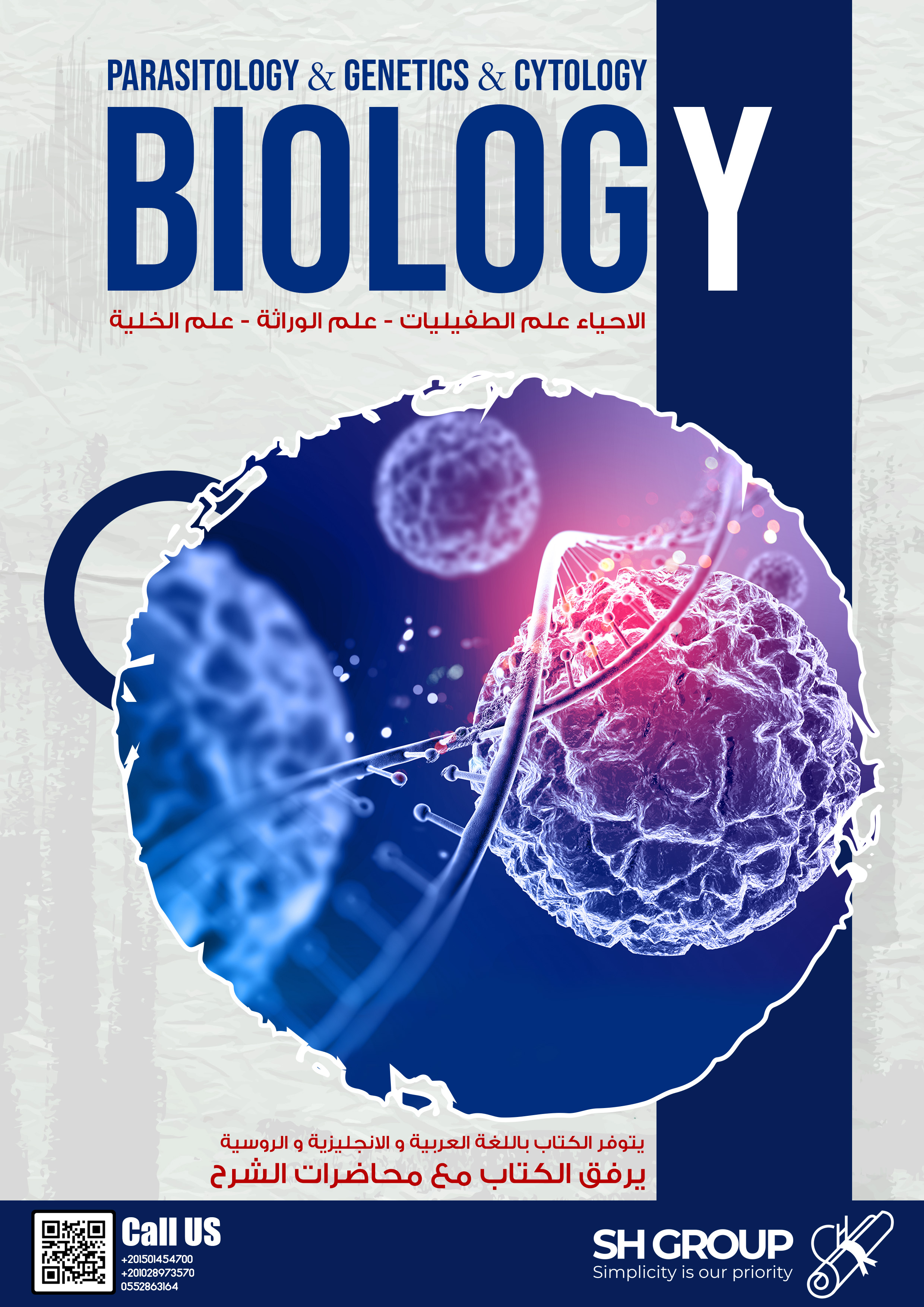

cytology (cell science), parasitology (parasitology) and genetics (genetics).


The histology course consists of all subjects of the subject that you will study in the Faculty of Medicine: fixation - cutting - formulation - body tissues - epithelial, connective, muscular and nervous tissues Digestive system - circulatory system A - integumentary system A - respiratory system - urinary system - internal secretion system - organ Male and female reproductive organs - the eye - and the ear
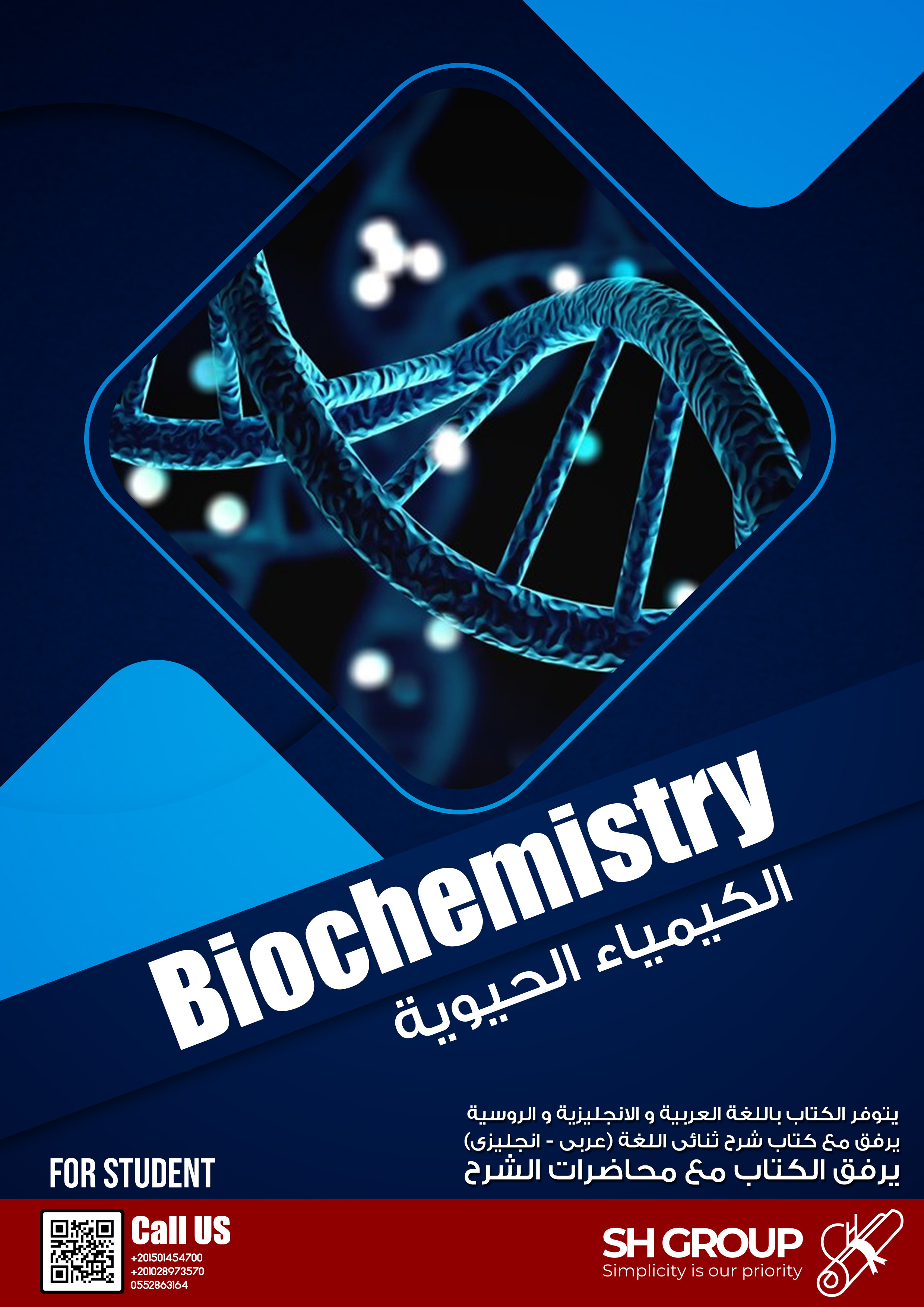

Primitive substances - Chemical elements of life - Biomolecules - Carbohydrates - Lipids - Proteins - Nucleic acids - Carbohydrates - Monosaccharides - Disaccharides - Oligosaccharides and polysaccharides - Use of carbohydrates as an energy source - Proteins - Lipids - Nucleic acids - The relationship of biochemistry with other molecular biosciences - Study of disease cases - Answers about cases
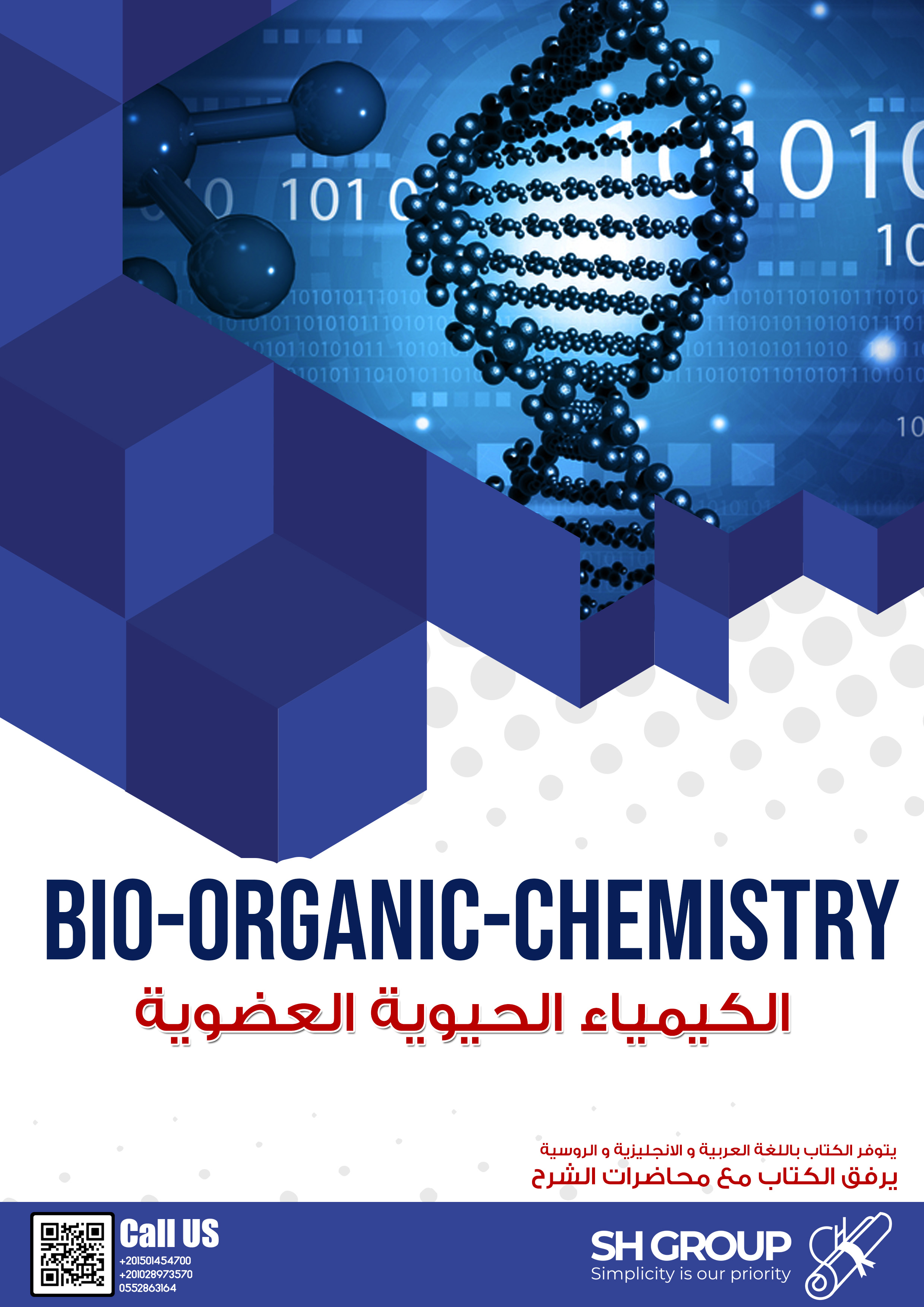

- . Hydrocarbons - hydrocarbon derivatives - functional groups - alkane - alkyl group - cycloalkane - alkene - cycloalkene - alkene - aromatic compound - benzene - alcohol - phenol - hydroxyl group - ether - alkoxide group - aldehyde - ketone - carbonyl group - carboxylic acid - carboxyl group - ester - acid halide - hydroacid - amide - amine - amine group.
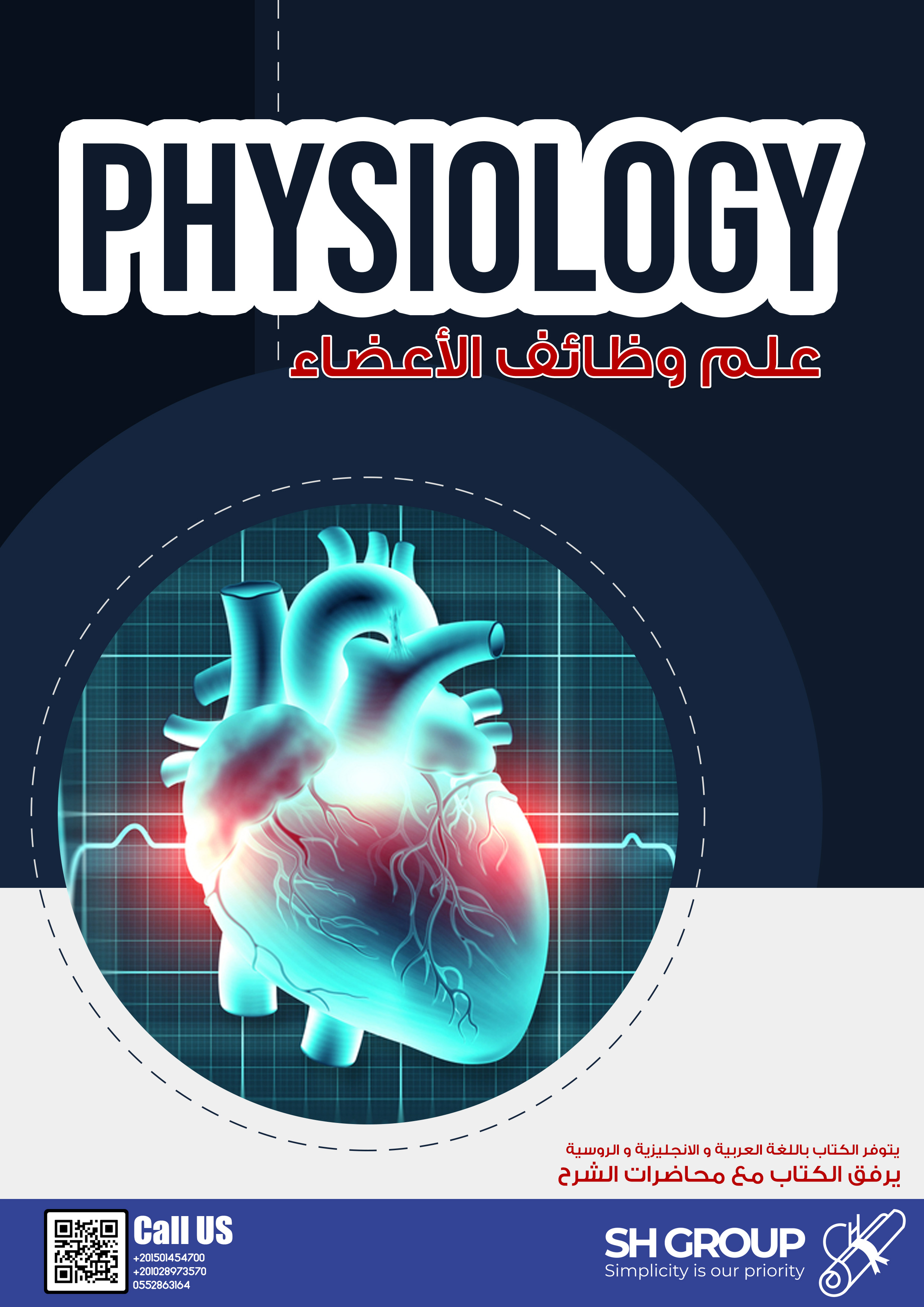

General framework for physiology - homeostasis (internal stability) - structure and physiology of cells - cell metabolism - understanding between cells and conversion of messages into responses - regulation of body fluids - nervous tissue - transmission of nerve impulses - nervous system structure and organization - hearing, balance and vision - the muscular system - Endocrine system - blood composition and functions - heart - blood vessels - respiratory system - digestive system - urinary system - immune system - reproductive system - skin........etc
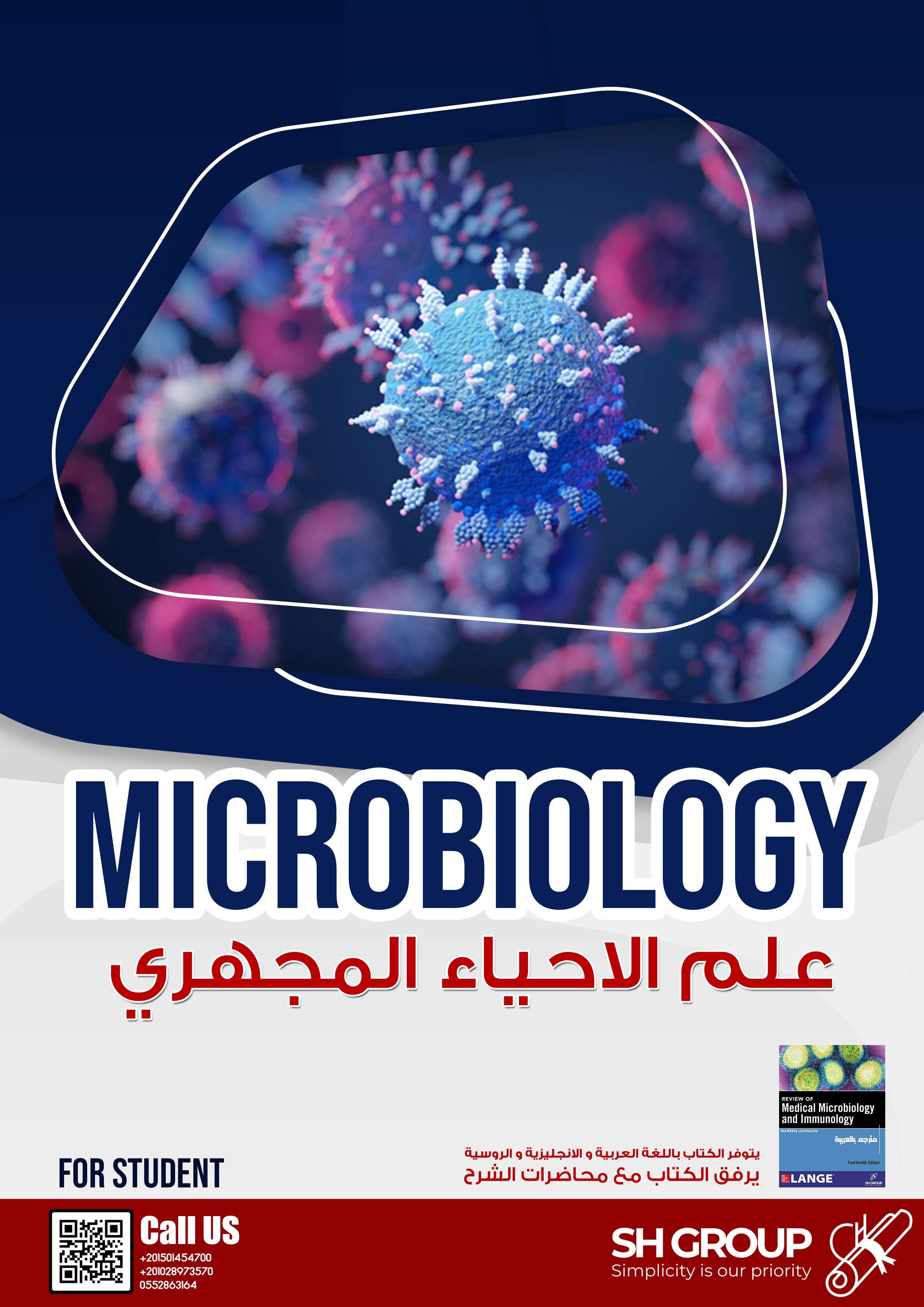

The aspect included eight units. The first talked about the general characteristics of microorganisms. The second dealt with the shape, structure, growth, and classification of bacteria. The third dealt with sterilization and disinfection. The fourth dealt with methods of inheriting bacteria and genetic engineering. The fifth dealt with antibiotics of all kinds, while the sixth, seventh, and eighth spoke in general. On viruses, parasites and fungi, the practical side dealt with several important experiments commensurate with the practical application of the student's understanding of the vocabulary of this subject.
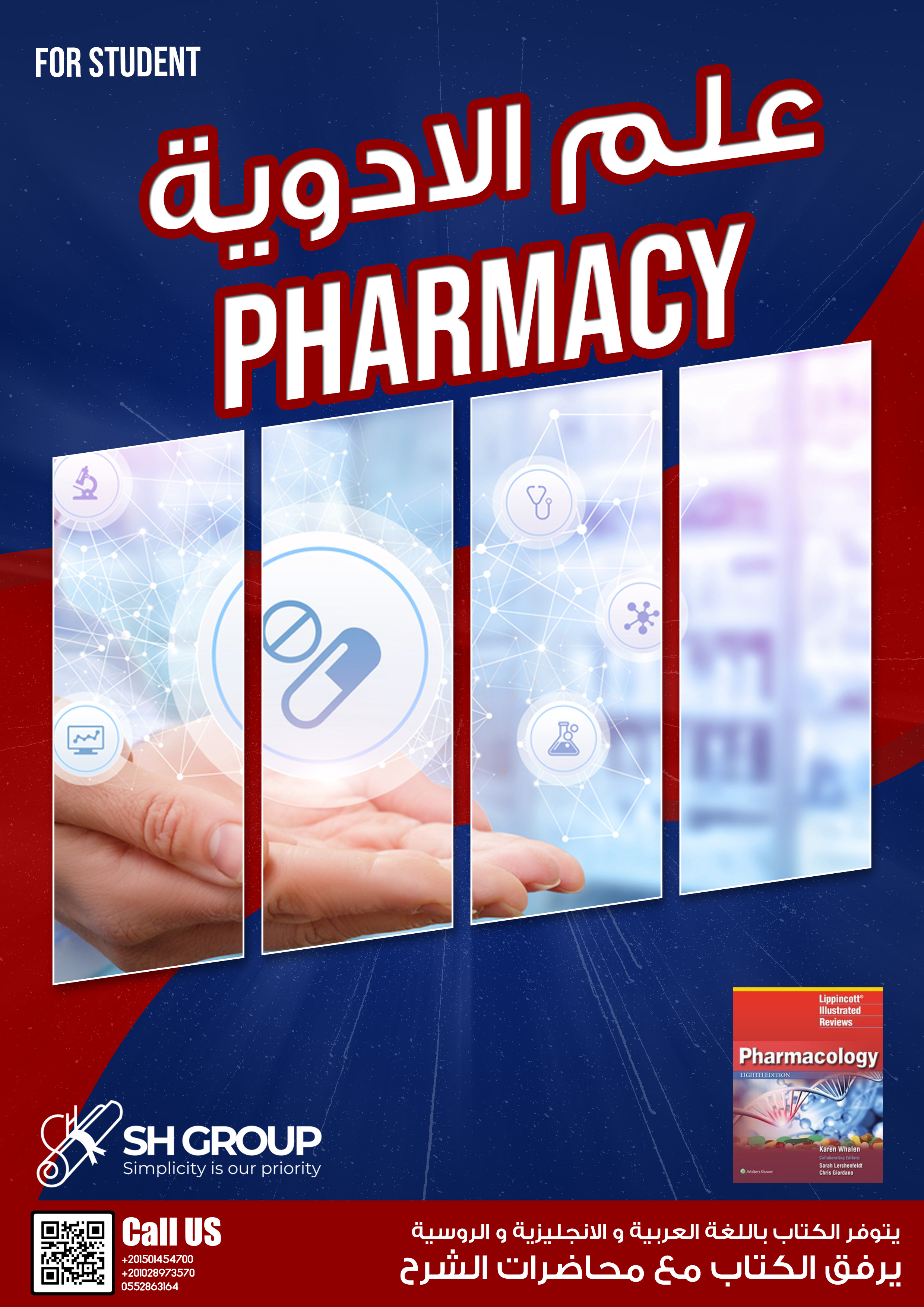

This book is divided into 48 chapters, each chapter deals with a specific group of drugs and an explanation of how they work in the body in addition to the pharmacological mechanics of the absorption process to the distribution of the drug inside the body, its metabolism and the mechanism of its excretion outside the body. Medicines of the human nervous system - Medicines of the cardiovascular system - Medicines used in the treatment of endocrine diseases - Medicines used in the treatment of different conditions - Treatments used in various infections
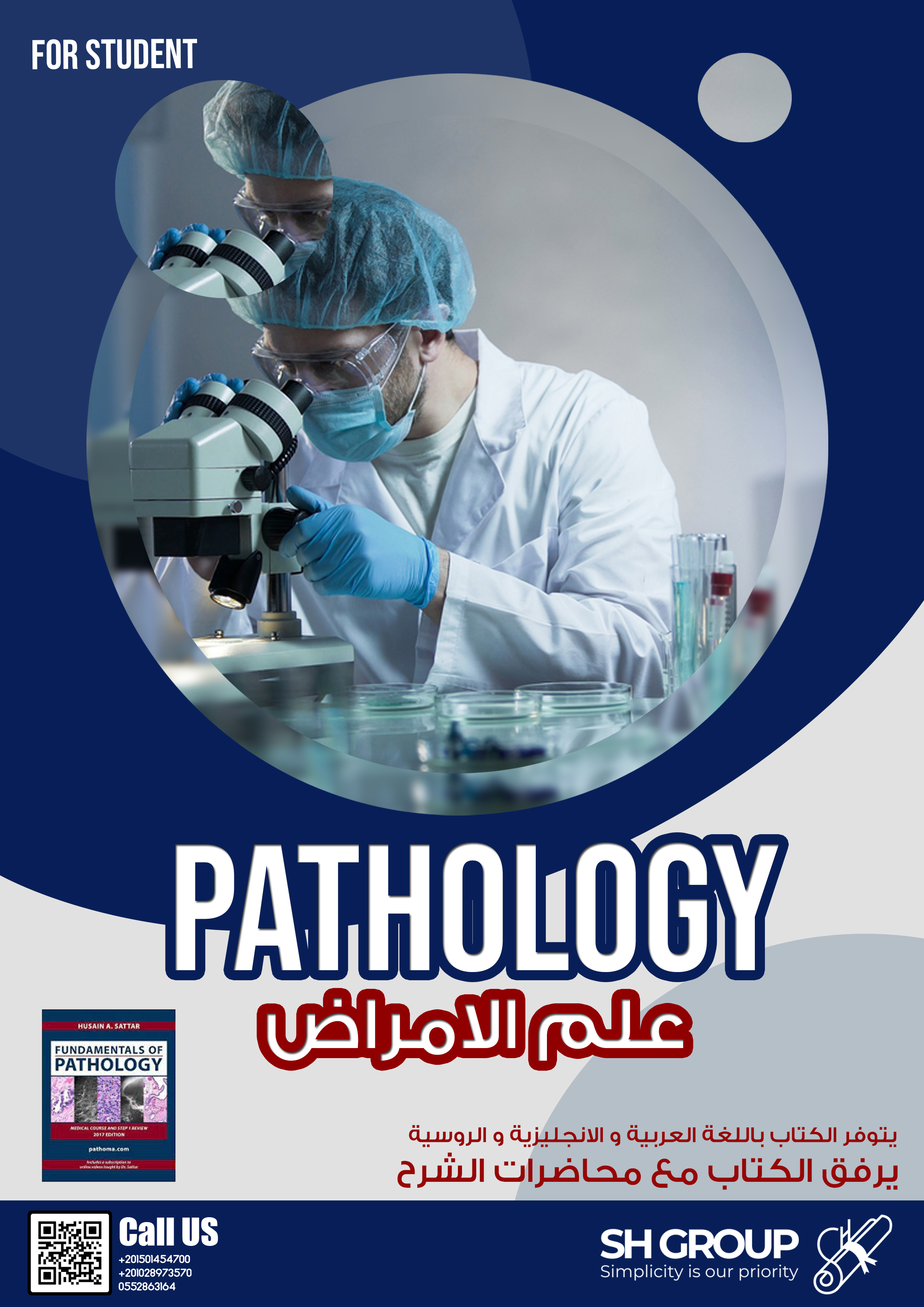

Growth, cellular damage, and cellular death . Inflammation, inflammatory disorders, and wound healing. Tumor basics. Homeostasis and related disorders Erythropoietic disorders - leukocyte disorders - pathology of vessels, heart, respiratory system, digestive system, pancreas, liver, gallbladder, kidney, urinary tract, female reproductive system, pregnancy, male reproductive system, endocrine glands, breast, central nervous system, skeletal system and skin
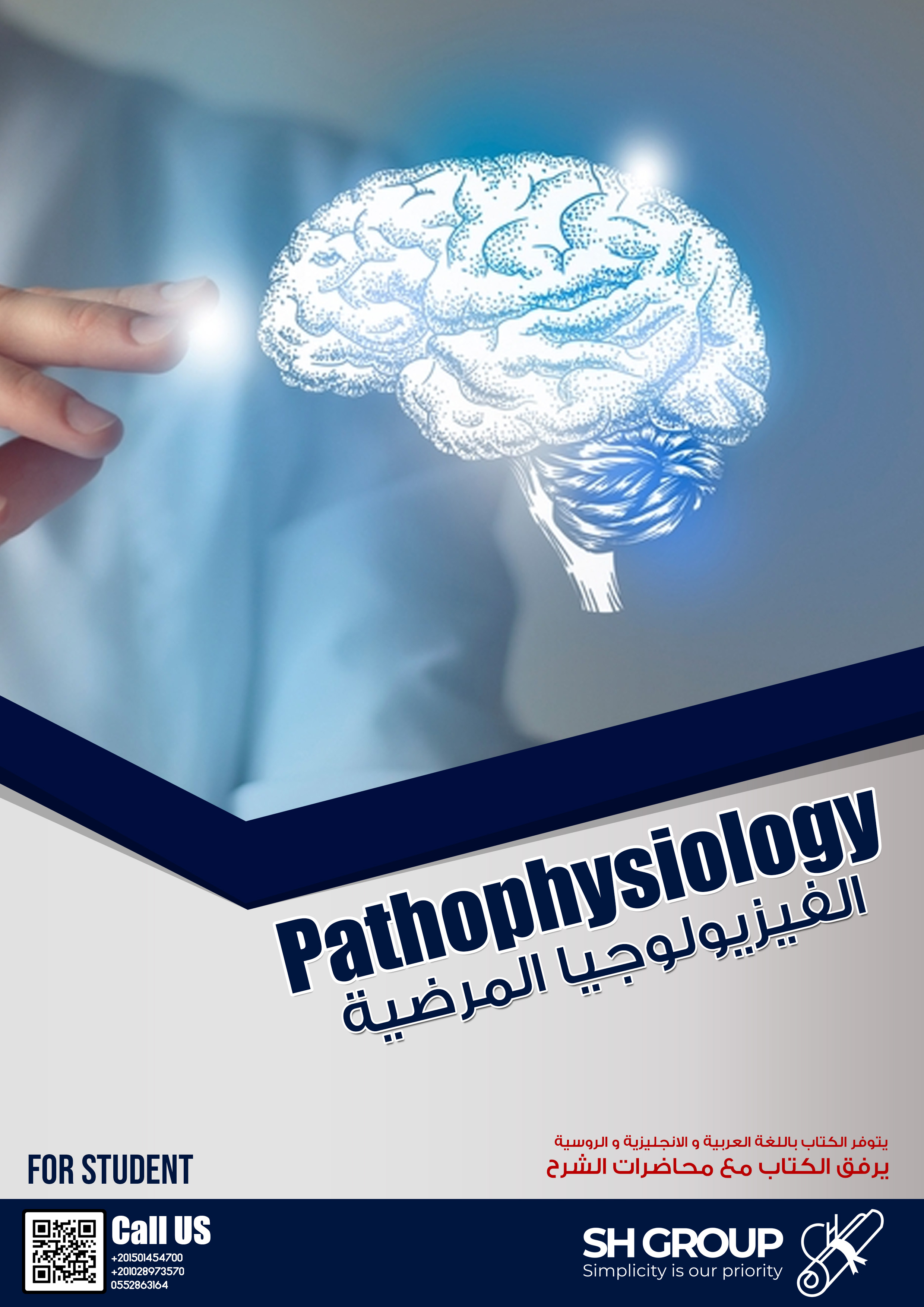

Pathophysiology is the study of changes in the normal functions of organs, whether mechanical, physiological, or biochemical changes, caused either by a disease, or caused by a syndrome. With a more formal definition, it is the branch of medicine that deals with any disturbances of bodily functions, resulting from disease or prodromal symptoms . (These are the symptoms that precede the onset of the disease, such as high temperature, weakness...)
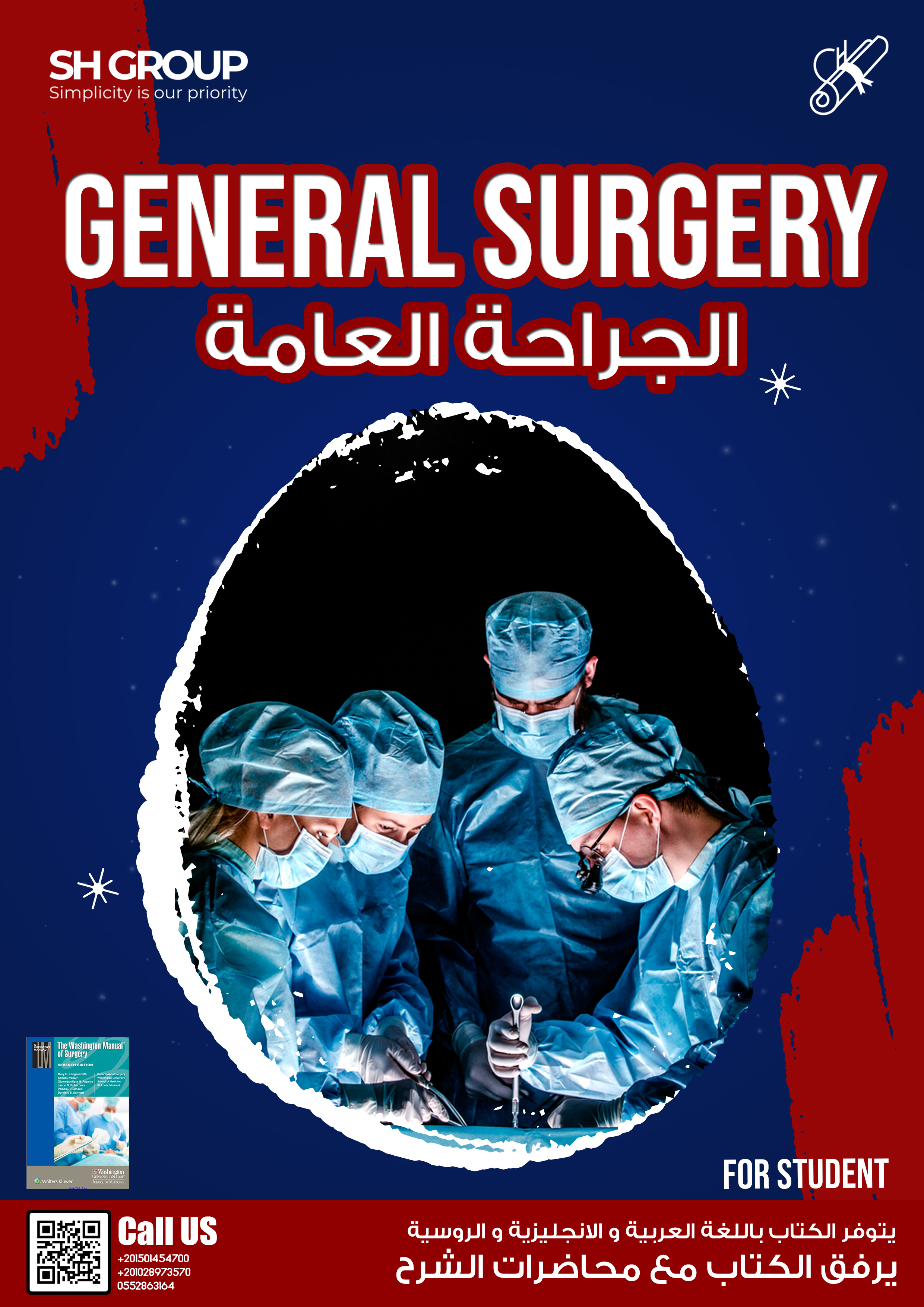

The first chapter is entitled General and Postoperative Care of the Surgical Patient, and the second chapter is entitled Nutrition, then the rest of the chapters are as follows;- Life Support- Fluids, Electrolytes, and Acid-Alkaline Balance Disorders- Hemostasis and Transfusion Therapy- Anesthesia- Vascular Accesses, Tubes, and Explodes- Minimally Invasive Surgery- Wound Care and Healing - Intensive care - esophagus - stomach - small intestine - acute abdominal pain and appendicitis - colon, rectum and anus - pancreas - surgical lesions of the liver - biliary tract surgery - spleen - fistulas, short bowel syndrome and obesity surgery - arteriovenous lesion - arterial aneurysm lesion - surgery Intravascular-venous lesion, thromboembolism and lymphedema-inherited neoplastic syndromes and genetic counseling-endocrine surgery-trauma surgery-organ transplantation-burns-skin and soft tissue tumors-hernias-breast surgery-otolaryngology, head and neck surgery-manufacturing surgery Hand surgery - cardiac surgery - general thoracic surgery - pediatric surgery - neurological emergency cases - orthopedic injuries - surgery Urology- obstetric and gynecological surgery- common surgical procedures
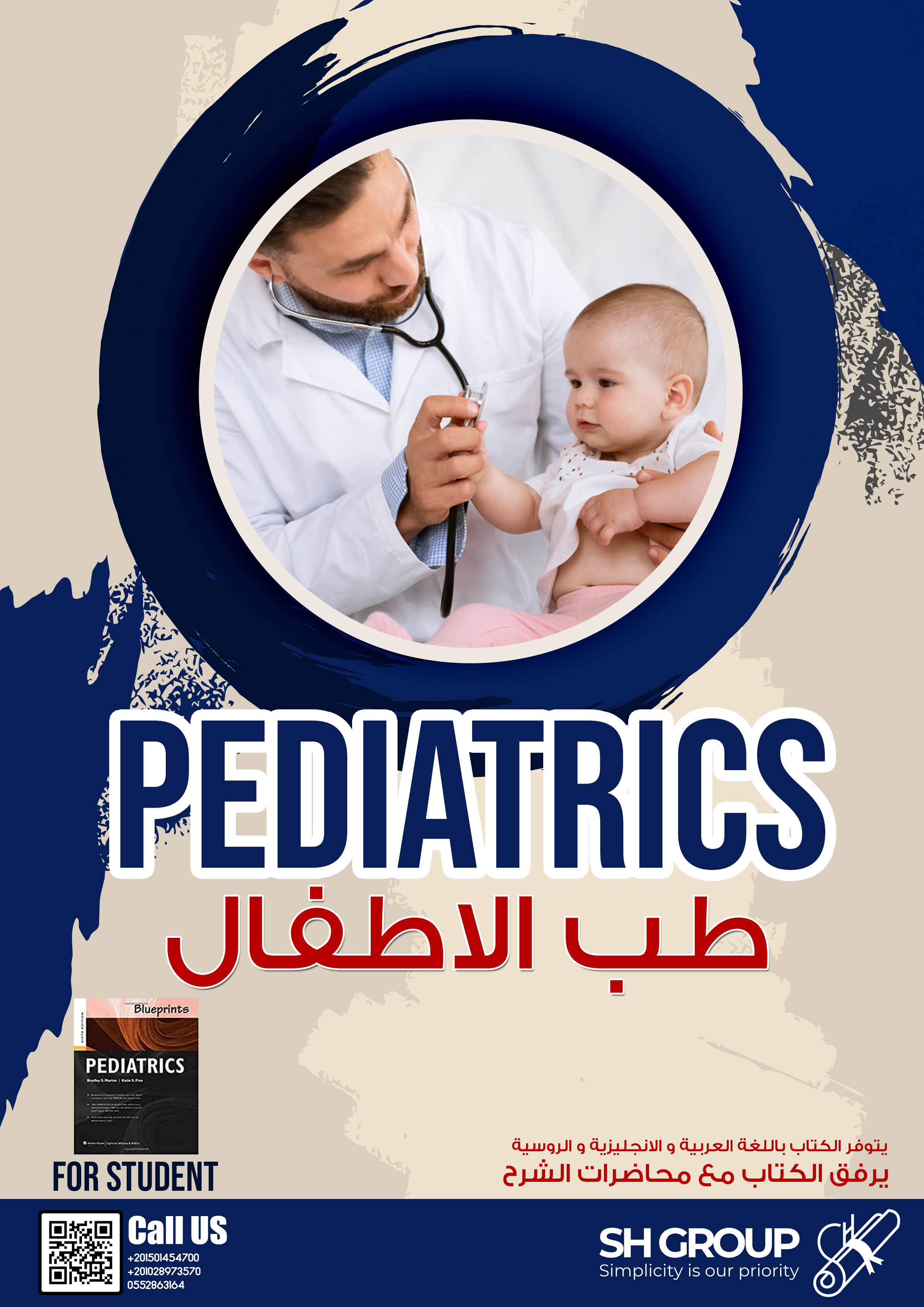

The book deals with the basics of pediatrics, where the common diseases that children are exposed to are reviewed in terms of symptoms, diagnosis, and treatment bases, within an integrated scientific method and approach. The book includes 23 chapters dealing with various aspects of pediatrics, and the last two chapters are devoted to self-assessment through multiple-choice questions. Each chapter dealt with the main diseases and focused on the important information that is useful to the student or the doctor. The information was organized in a smooth, accurate and clear manner. At the end of each chapter, the main points dealing with important information were summarized, and they were laid out in a distinctive way so that they can be easily referred to while preparing for the exam.
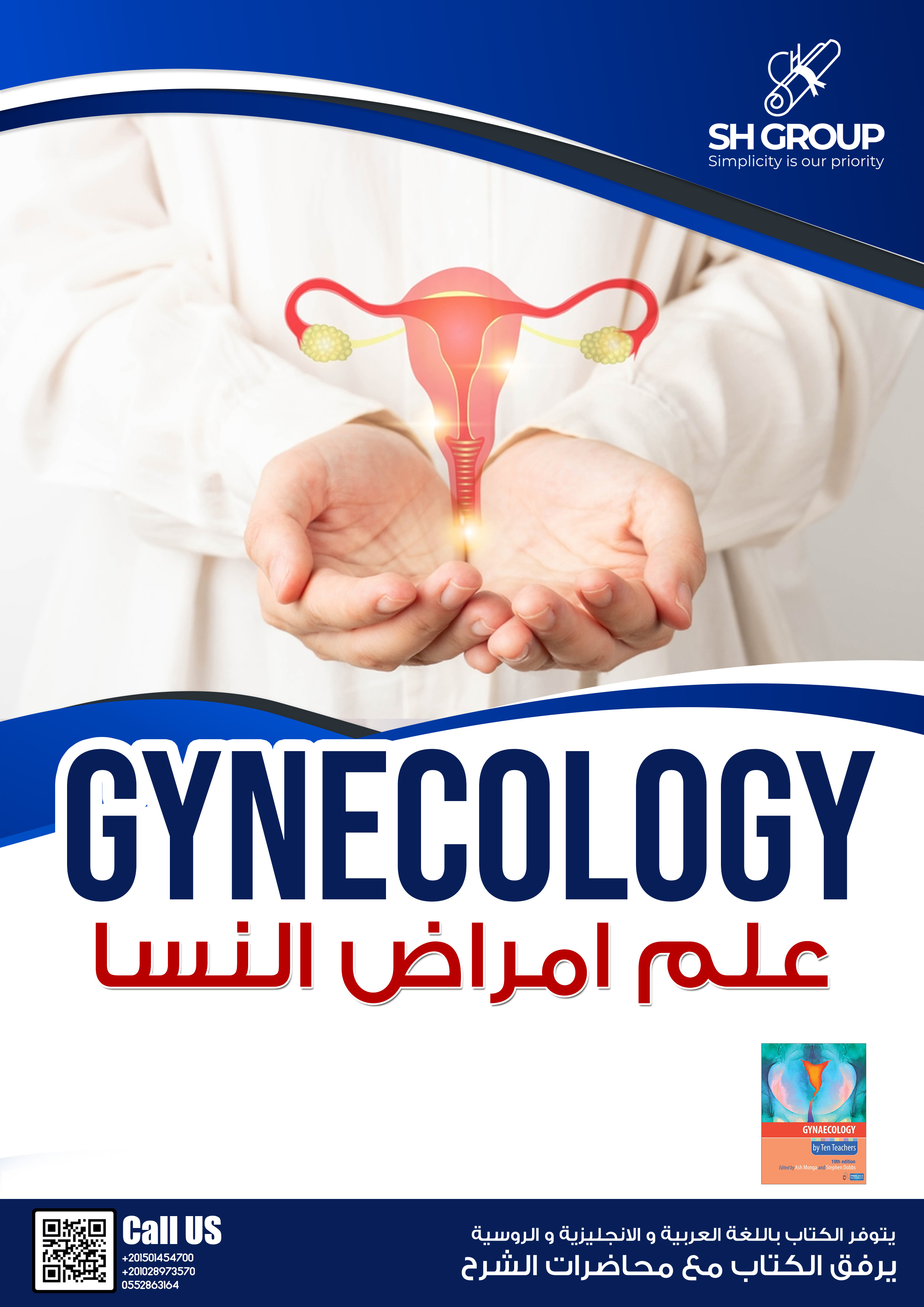

The book features full coverage of all topics in this field. Each chapter has been carefully written, beginning with an overview of the subject, then definition, prevalence, aetiology, clinical manifestations, differential diagnosis, examinations, treatment, key points, and new developments.
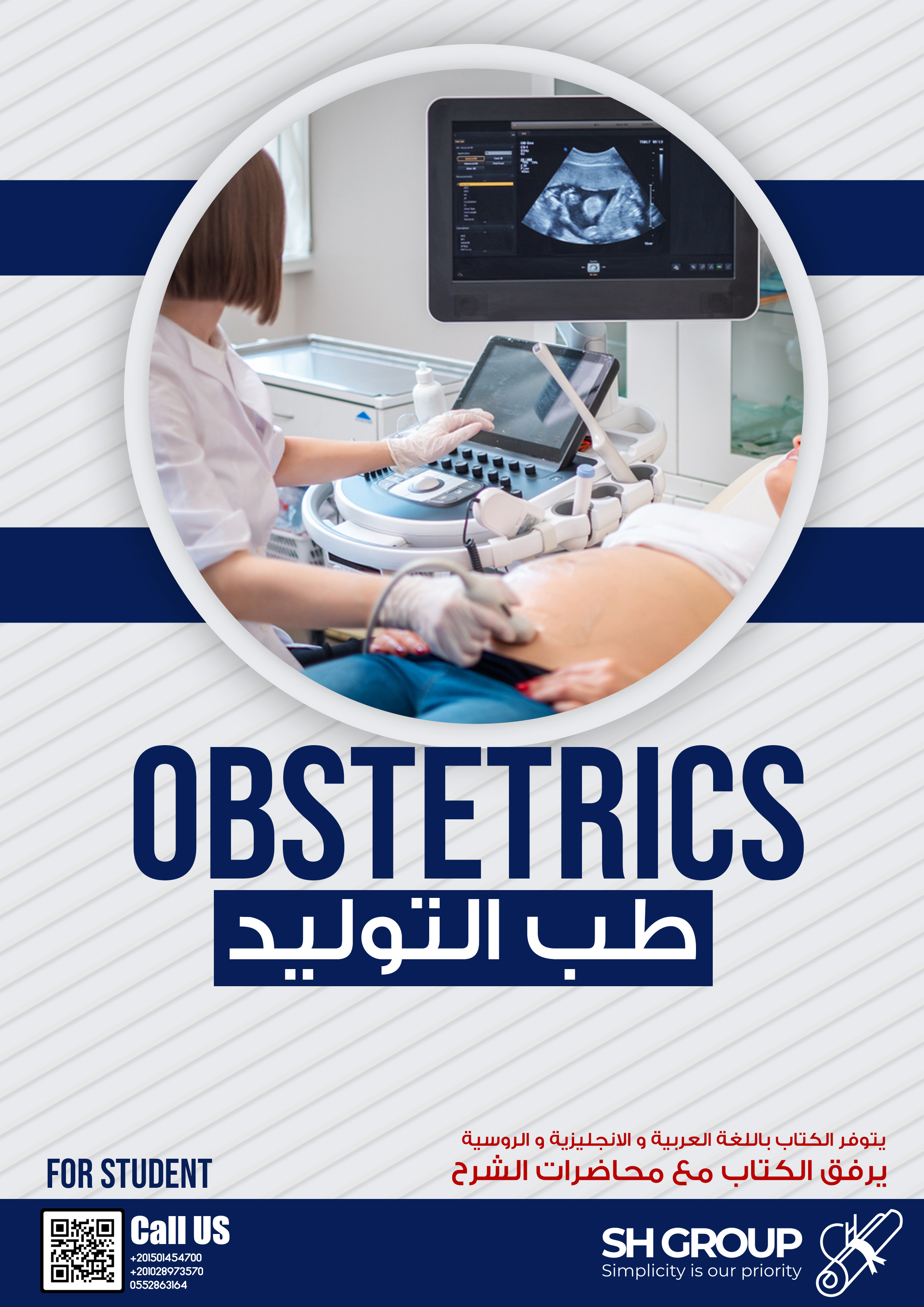

The book includes the following topics: the clinical approach to the patient - anatomy and embryonic development of the female reproductive system - physiology of the female reproductive system - endocrinology in pregnancy and childbirth Maternal physiology and immunomodulation during pregnancy
Prenatal care: care before pregnancy and before childbirth, Genetic and malformation evaluation, prenatal evaluation of the fetus Vaginal delivery, labor and postpartum care - anatomical considerations, analgesia, obstetric anesthesia, and neonatal resuscitation Evaluation of the fetus during labor Obstetric hemorrhages and puerperal infection - uterine contractility and myometriosis - Obstetric complications :
premature labour, premature extrusion of membranes, intrauterine growth restriction, prolonged pregnancy,
Fetal death in the womb - multiple pregnancies - defective presentations - high arterial tension during pregnancy - rhesus normal immunization . Common medical and surgical diseases in pregnancy - obstetric procedures
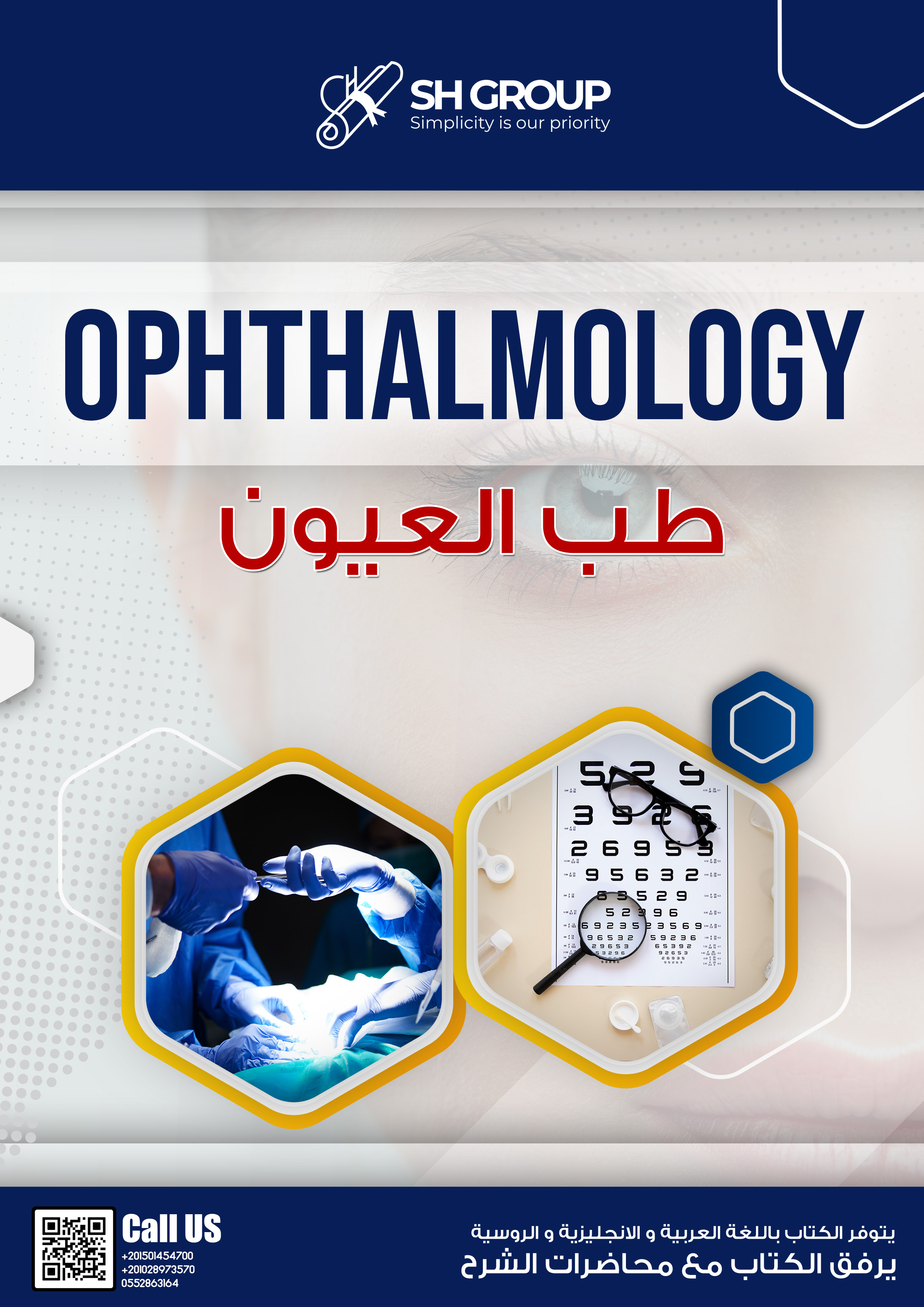

This reference book by Jack Kansky and Brad Pauling, "The Brief in Ophthalmological Clinics," provides the basic information we need for rapid and accurate diagnosis and management of various ophthalmological diseases. This brief is based on the best-selling book Clinical Ophthalmology, the systemic approach of its authors Jack Kansky and Brad Pauling, where each case is presented systematically to ensure quick access to key information and clinical cases, and therefore it was an ideal scientific reference for doctors and as an information bank for undergraduate medical students The first to attend clinical examinations and interviews in the field of ophthalmology. This publication contains the latest updated developments in pharmacological and surgical treatments and includes more than 800 color illustrations of ophthalmic diseases, most of which are recent.


This book deals with some basic information related to neurology and neurosurgery in particular, starting with a review of clinical skills and associated physical signs, moving on to talking about the most famous diseases related to neurology, represented in stroke, brain tumor, head injuries, tremor and paralysis, as well as cranial nerve disorders, in addition to explaining the symptoms And the causes of motor neuron disease, peripheral neuropathy, myasthenia gravis, and muscle diseases, touching on talking about loss of consciousness, syncope, epilepsy, headache, and facial pain, concluding with a list of the most dangerous infections of the nervous system, while shedding light on the most prominent methods of prevention and treatment for each of these serious neurological diseases.
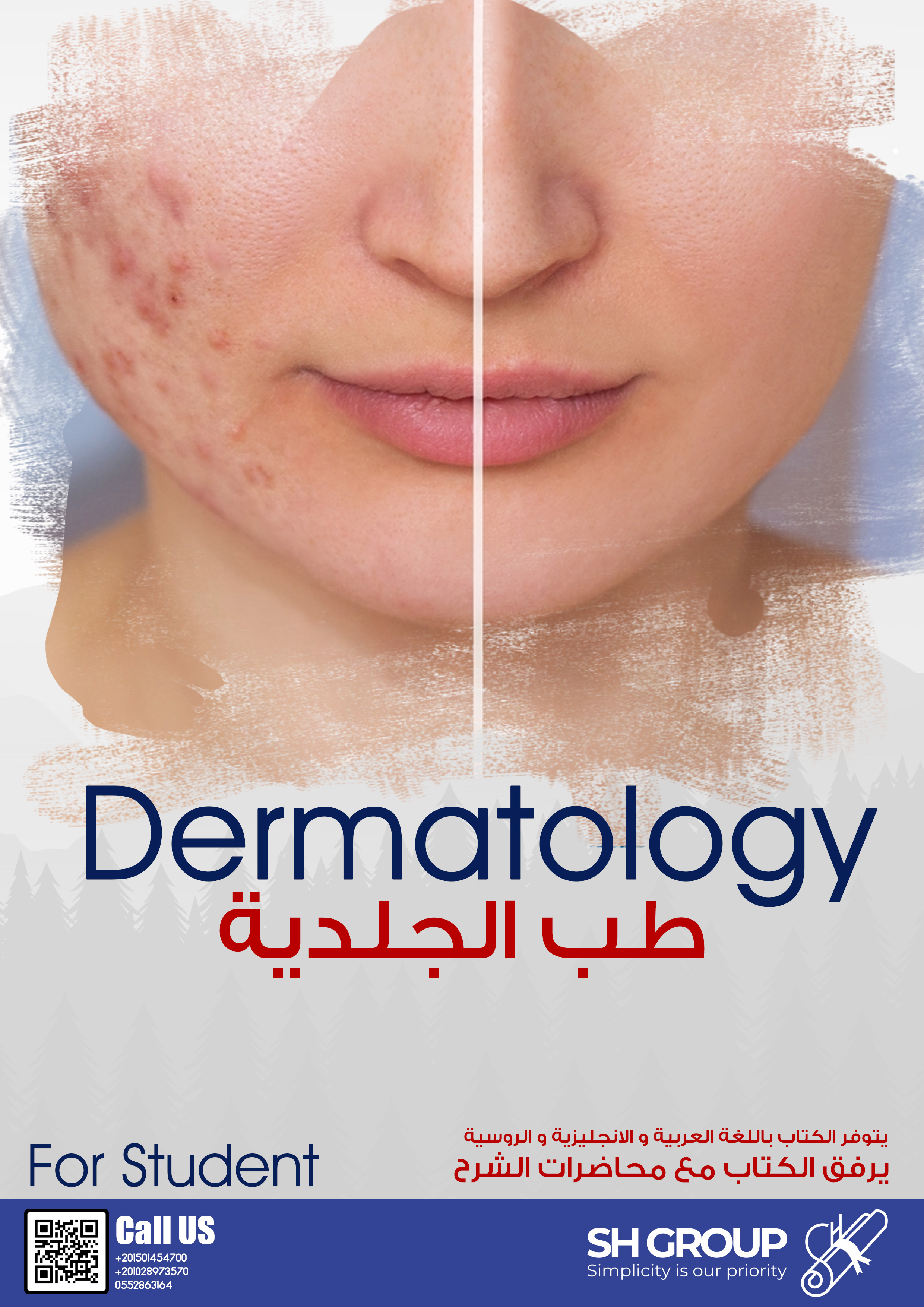

SH GROUP Dermatology book focuses on disease - cause - solution and treatment. It consists of: Chapter One: Skin Structure and Functions - Chapter Two: Skin Problems - Acne - Psoriasis - Hand Eczema - Contact Allergies - Seborrheic Eczema - Vitiligo - Melasma - Warts viral - urticaria - lichen planus - Foot fungus - corns - cracks in the feet - increased sweating - sebaceous cyst (seboma) - skin growths - rosacea - scabies - skin cancer - herpes - itching - chapter three Hair problems: an overview - hair loss - alopecia - hirsutism - baldness and transplantation Hair - dandruff - scalp fungus. Chapter four skin problems in children: eczema - smallpox - molluscum contagiosum - diaper rash - bloody sores - measles - chapter five: modern methods of dermatology and skin care: Botox injections - fillers - chemical peeling - crystal peeling - mesotherapy - dark circles under the eye - Skin cracks - laser hair removal - laser skin tightening - laser fat melting - fractional laser - tattoos and their treatment - misconceptions about lasers - dry skin - sunscreens - cosmetics.
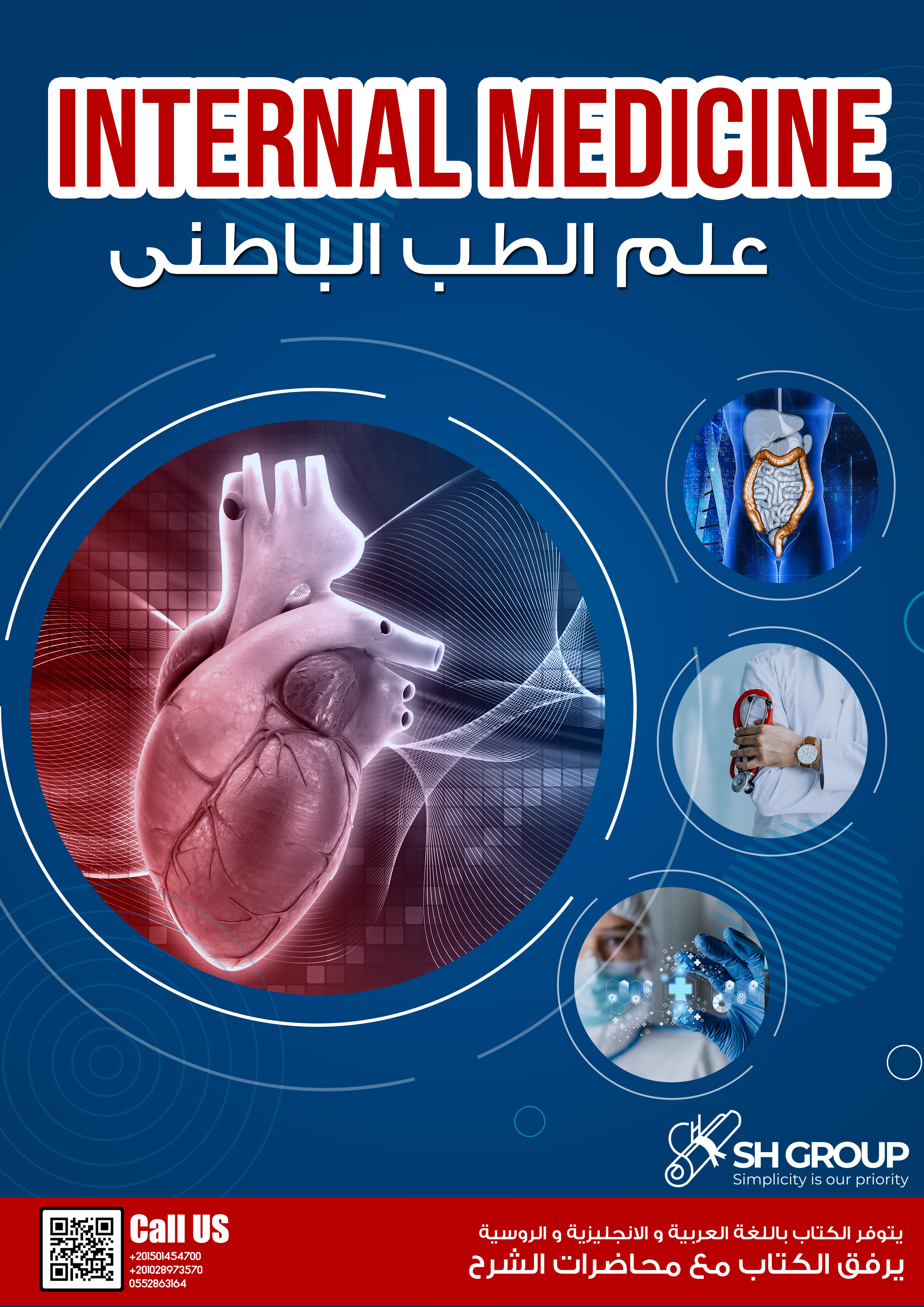

Good medical practice - aging and disease - surgical care and emergency medicine - toxicology - metabolism and clinical biochemistry - kidney and urinary tract diseases - cardiovascular diseases - respiratory diseases - endocrine diseases - diabetes mellitus - digestive and nutritional disorders - diseases of the liver and biliary tract - diseases Blood - Neurological diseases - Interpretation and analysis of investigations (a new chapter with an old title in its content, dealing with the study of ECG , chest x-ray, and some inflammatory analyzes ESR , CRP , etc.)
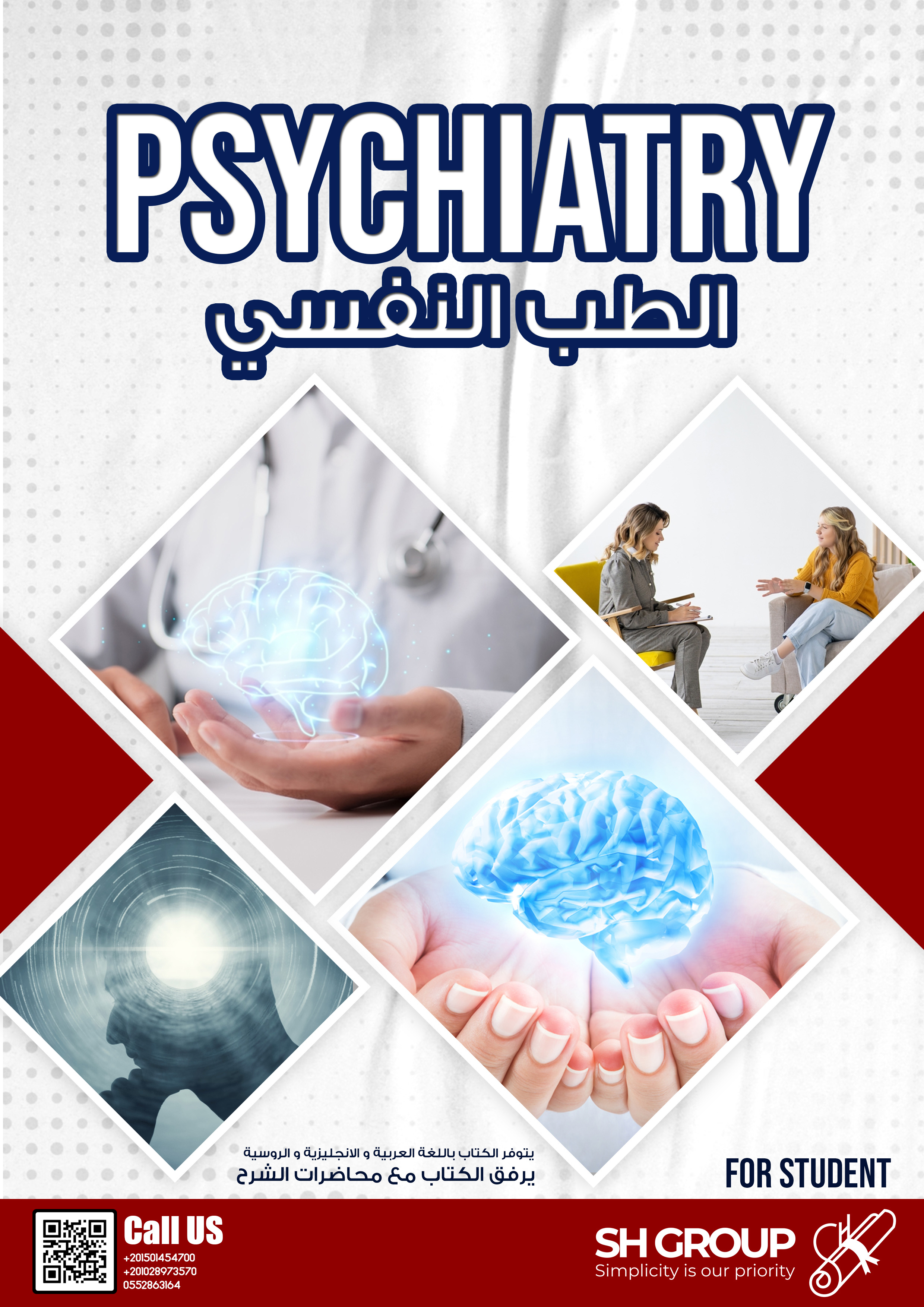

. Classification in psychiatry. Examination of psychiatric history and mental status. Clinical evaluation and laboratory examinations in psychiatry. Brain imaging. major neurological disorders. A major or minor neurocognitive disorder caused by another medical condition (amnestic disorder). Mental disorders due to a general medical condition. Substance-related disorders and addictions. Schizophrenia spectrum and other mental disorders. Schizophrenia, schizoaffective, delusional, and psychotic disorders. Mood disorders. Anxiety disorders. Obsessive-compulsive and related disorders. Trauma and stress related disorders. Dissociation disorders. Somatic symptoms and related disorders. personality disorders Impotence and gender dysphoria. Feeding and eating disorders. Obesity and the metabolic syndrome. Normal sleep, sleep and wakefulness disorders. Disruptive disorders, impulse control and behavior. Psychosomatic medicine. Suicide, violence and psychological emergencies. Child Psychiatry. End of life care issues. Psychological treatments. Pharmacological psychotherapy and nutritional supplements. Brain stimulation therapies. Forensic Psychiatry and Psychiatric Ethics 32 . Medication-induced movement disorders Glossary of signs and symptoms
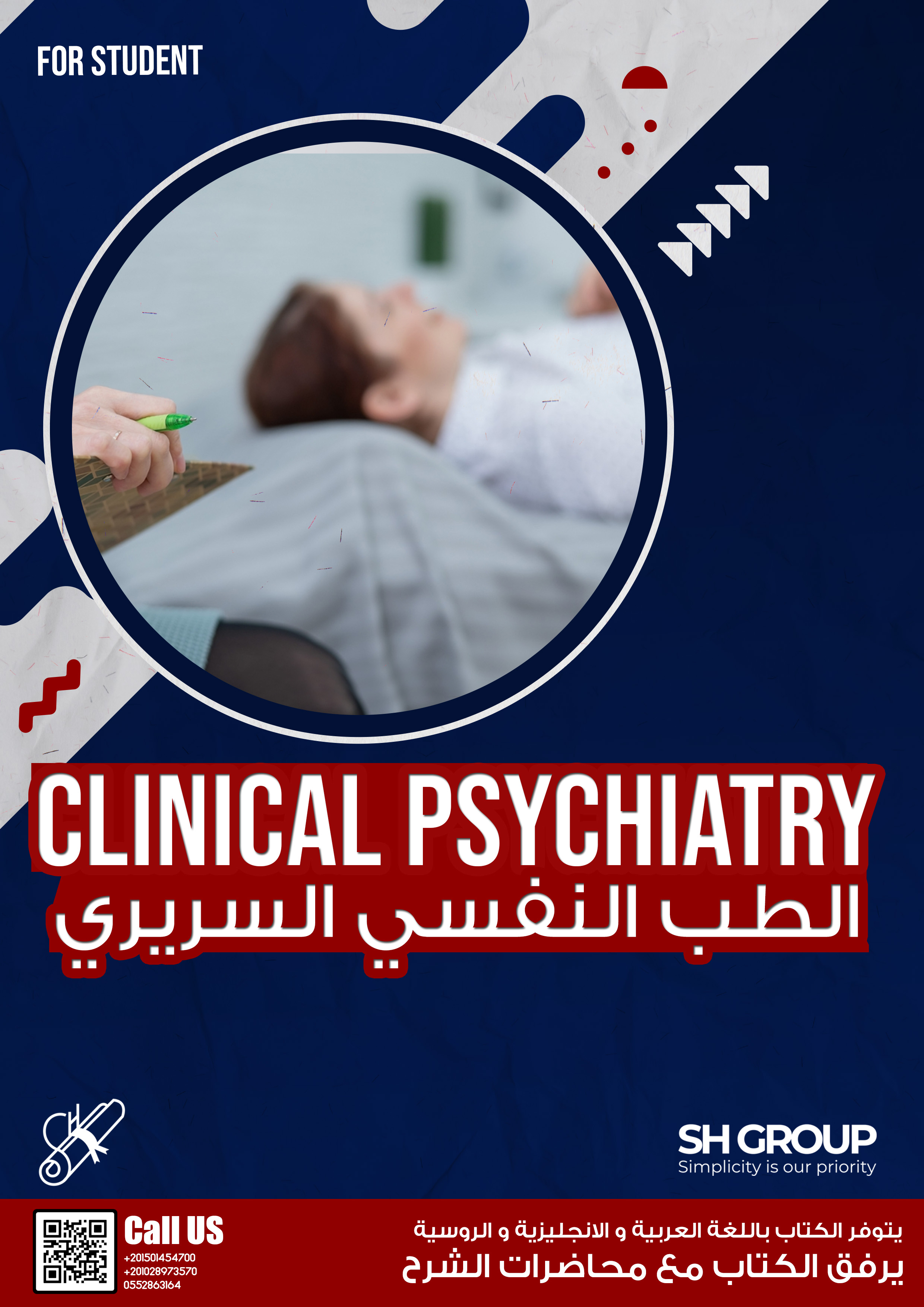

. Classification in psychiatry. Examination of psychiatric history and mental status. Clinical evaluation and laboratory examinations in psychiatry. Brain imaging. major neurological disorders. A major or minor neurocognitive disorder caused by another medical condition (amnestic disorder). Mental disorders due to a general medical condition. Substance-related disorders and addictions. Schizophrenia spectrum and other mental disorders. Schizophrenia, schizoaffective, delusional, and psychotic disorders. Mood disorders. Anxiety disorders. Obsessive-compulsive and related disorders. Trauma and stress related disorders. Dissociation disorders. Somatic symptoms and related disorders. personality disorders Impotence and gender dysphoria. Feeding and eating disorders. Obesity and the metabolic syndrome. Normal sleep, sleep and wakefulness disorders. Disruptive disorders, impulse control and behavior. Psychosomatic medicine. Suicide, violence and psychological emergencies. Child Psychiatry. End of life care issues. Psychological treatments. Pharmacological psychotherapy and nutritional supplements. Brain stimulation therapies. Forensic Psychiatry and Psychiatric Ethics 32 . Medication-induced movement disorders Glossary of signs and symptoms
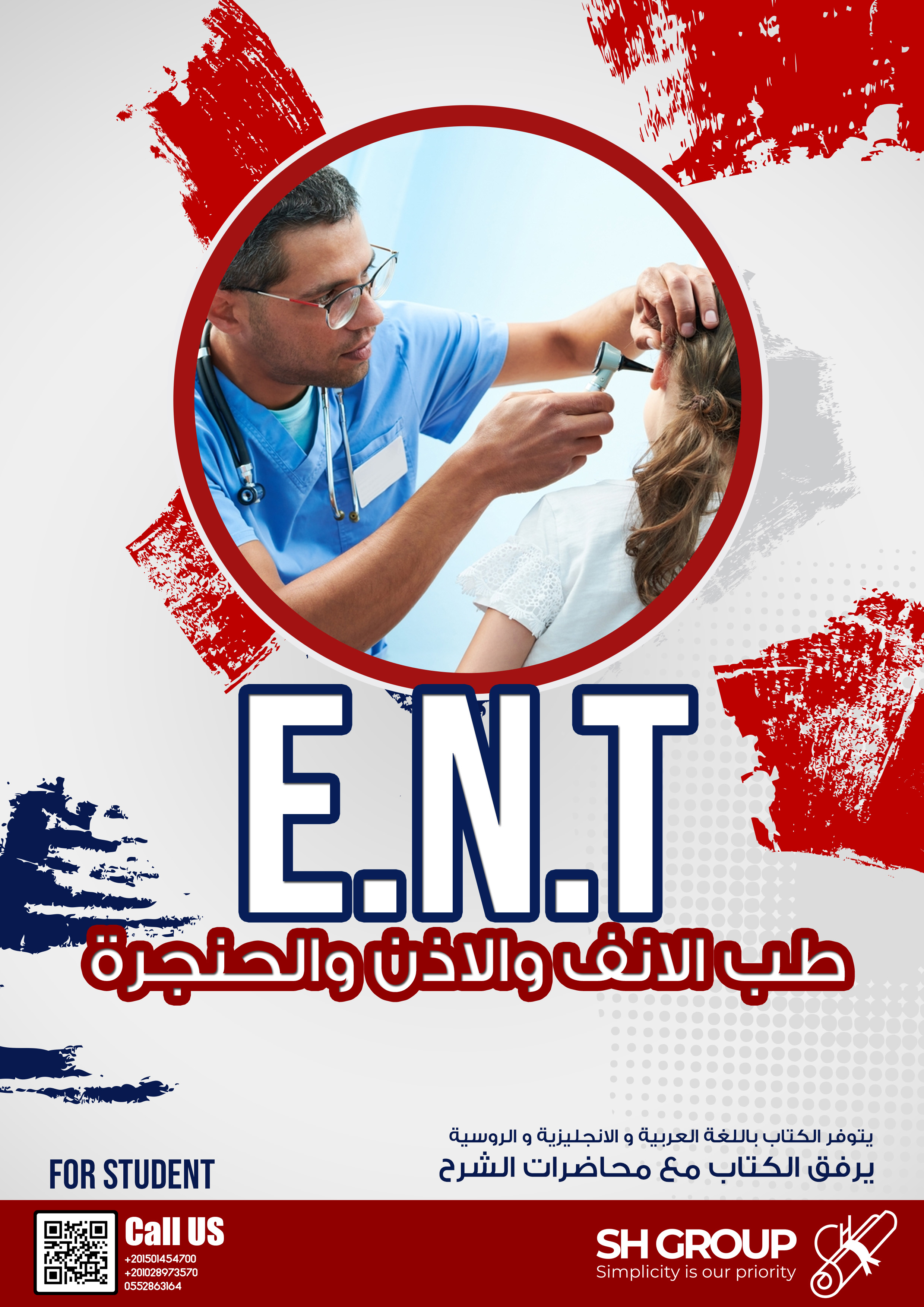

Ear page - ear anatomy - ear physiology - ear examination - external ear diseases tympanic membrane diseases - middle ear diseases - acute suppurative otitis media - chronic non-suppurative otitis media - chronic suppurative otitis media - complications of suppurative otitis media - some diseases The inner ear and the eighth nerve - facial nerve paralysis - treatment of ear diseases - nose - anatomy of the nose - anatomy of the paranasal sinuses - physiology of the nose and paranasal sinuses - symptoms of nasal diseases - nose examination - congenital nasal diseases - rhinitis - treatment of acne - complications of sinusitis - Diabetes - nasal trauma - diseases of the nasal septum - cysts of the paranasal sinuses - tumors of the nose and paranasal sinuses - pharynx - anatomy of the pharynx - pharynx functions - examination of the pharynx - diseases of the nasopharynx - tumors of the nasopharynx - diseases of the oropharynx - ulcers related to the pharynx - diseases of the hypopharynx - Esophagus - diseases of the esophagus - larynx - anatomy of the larynx - functions of the larynx - examination of the larynx - diseases of the larynx - laryngeal trauma - laryngitis - laryngeal cysts - polio - laryngeal tumors - laryngeal operations
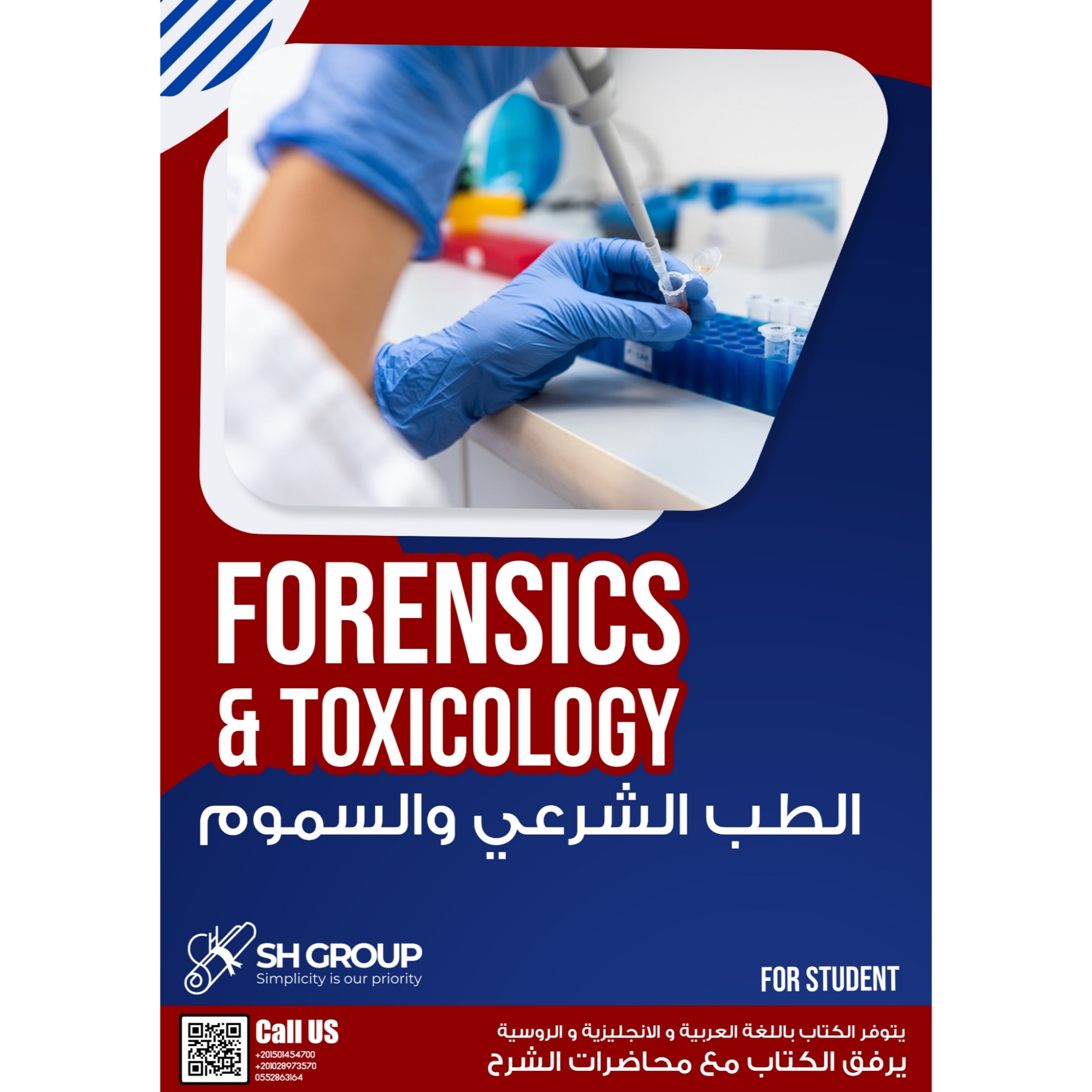

How to identify the tools used to differentiate between the remaining corpses of living organisms as well as human remains such as hair and bones, how to identify a person through a few drops of any liquid secreted from his body from blood or nasal mucus, and how to identify various types of wounds and differentiate between wounds caused by Assault and fabricated wounds, how they occurred, why they occurred, the type of machine used to cause those wounds, degrees of burns, and methods of treatment. Consuming it and anti-toxin treatment, what are the side effects of ingesting the poison, and what is the pharmacological dose and dose? Also, in the second section of the article, there is the clinical toxicology part, in which the student knows the toxicant and the lethal dose for each drug. Domestic Violence. -Suspicious infant deaths.-Medical aspects of obstetrics.-Medical aspects of sexual assaults.-Medical aspects of asfaxia.-Transport injuries.-Thermal injuries.-Fire injuries.-Head injuries.-Legal aspects of torture.-Private organ injuries.-Aspects LEGAL MEDICAL WOUNDING.-POSTMORTEM ALTERATIONS.- MEDICAL LEGAL ASPECTS OF DEATH.-Bloodstains.-Forensic Genetics.
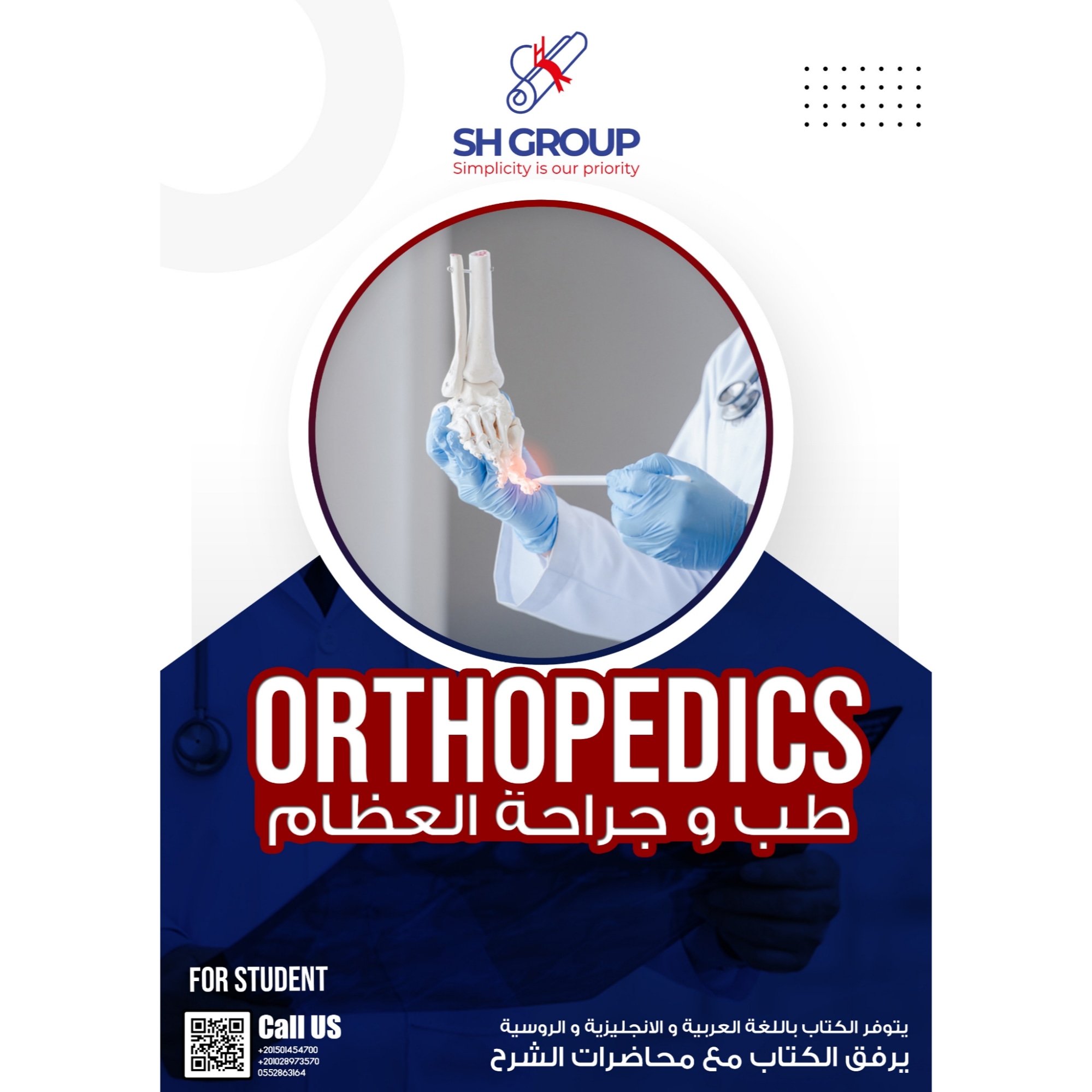

Some topics in the book: Bones: bone divisions (long - short - flat - irregular - hollow) - general characteristics of bones - general functions of bones - parts of the skeleton : radius + ulna - structure of the palm: wrist + instep and palm + skeleton of the fingers of the hand (lower limb) pelvis: bones of the pelvis + sacrum + ilium + pubis + hip - thigh: the upper end of the bone (head of the bones - neck of the bones - the greater trochanter - The lesser trochanter) - the body of the bones - the lower end of the bones - the structure of the leg) - the tibia - the fibula - the patella - the structure of the foot: ankle + metatarsal + toes. The structure of the chest: sternum + muscles - skull: the external appearance of the skull (the upper appearance - anterior - posterior - lateral - lower: mandible + cranium + humerus + facial structure) spine: areas of the spine (lateral - anterior - posterior) - deviations of the spine (hump - sternum - trunk) vertebrae: vertebra body + vertebral arch + Vertebral protrusions) cervical vertebrae: atlas + axis + procession thoracic vertebrae dorsal - lumbar - sacral - coccygeal - joints: fibrous - cartilaginous - primary - secondary - synovial The joints of the upper limb (shoulder girdle joints + shoulder + arm) - lower limb (pelvic girdle + hip + leg: knee - two tibial joints - ankle - torso)
We are here to answer your questions and comments
info@business.com
1(800) - 374 - 990
301 West 41st Street - Unit 501 Miami Beach - Florida - United States